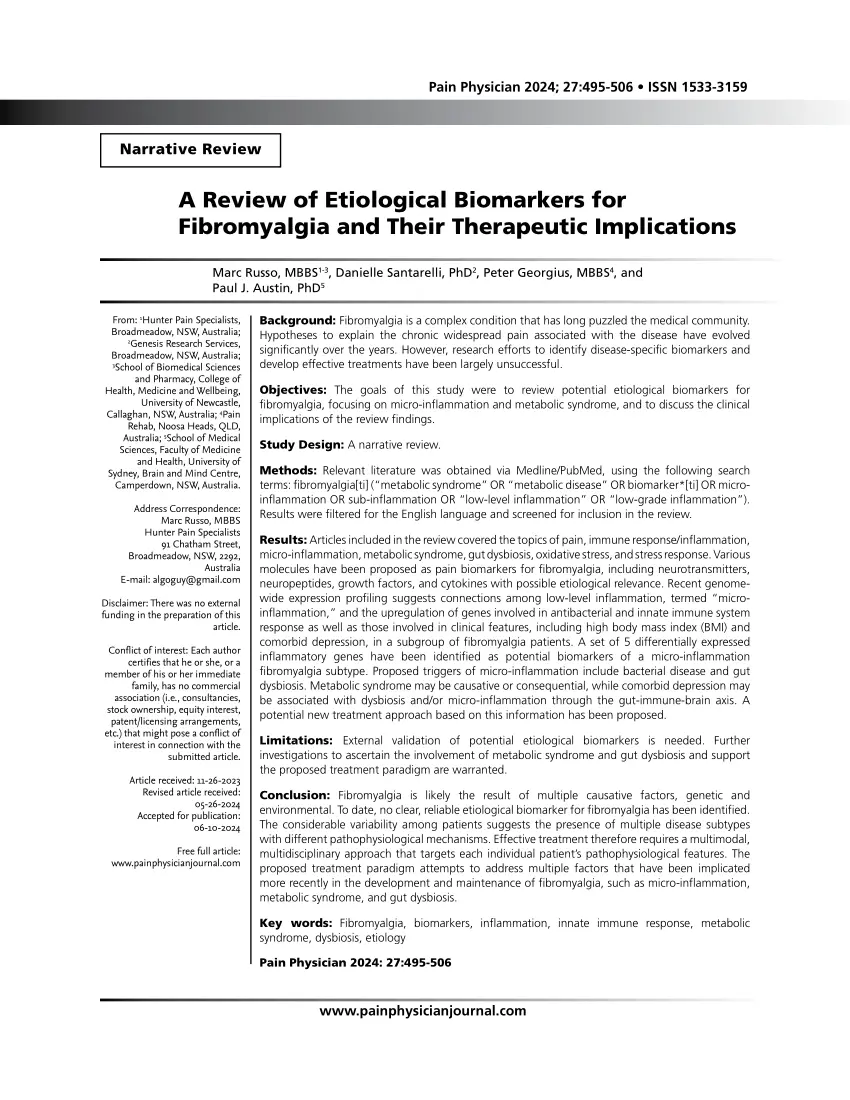Understanding fibromyalgia has become one of the most fascinating challenges in modern biology. Scientists around the world are investigating how molecules, genes, and cellular systems communicate to produce the symptoms observed in people living with this chronic condition. Biomarker research now plays a key role in describing the biological patterns that define fibromyalgia.
What Are Biomarkers in Fibromyalgia Research?
A biomarker is a measurable biological molecule that provides information about how the body functions. In fibromyalgia research, biomarkers help scientists study pain sensitivity, stress response, and immune communication without referring to any medical procedure or treatment.Read more
Researchers are exploring biomarkers found in blood, saliva, and cell cultures, using molecular biology tools such as ELISA kits, RNA-Seq, and metabolomic profiling. These methods make it possible to detect subtle biochemical changes that might explain fatigue, cognitive challenges, and widespread sensitivity.


 Source : ResearchGate
Source : ResearchGate
Link : URL of this article

Key Biological Pathways Under Investigation
1. Cytokine Signaling and Immune Balance
Cytokines are small proteins that regulate how cells of the immune system communicate. Studies suggest that variations in cytokine levels may influence the biological perception of pain or stress. Monitoring these molecules helps scientists describe how immune signaling interacts with the nervous system in fibromyalgia. Learn more
2. Oxidative Stress Markers
Cells constantly produce reactive molecules during metabolism. In fibromyalgia, researchers have found patterns suggesting an imbalance in the body’s oxidative stress system a sign that energy metabolism and cellular defense may play a role in fatigue and muscle sensitivity.Learn more
3. Neurotransmitter and Hormonal Patterns
Fibromyalgia studies also focus on molecules that transmit messages between neurons, including serotonin, dopamine, and cortisol. Variations in these systems could help explain why some individuals experience heightened sensory responses. Learn more
The Role of Epigenetics and Gene Expression
Epigenetic science is helping researchers understand how environmental factors such as sleep, stress, and physical activity can influence gene activity without changing DNA sequences. Learn more
By using advanced methods like ChIP-Seq and DNA methylation analysis, scientists can observe how specific genes related to the nervous and immune systems are regulated. These findings point toward an adaptive biological mechanism rather than a simple structural change.
Global Research and Technological Innovation
Around the world, academic and industrial laboratories are using multi-omics technologies integrating genomics, proteomics, and metabolomics to better understand the complexity of fibromyalgia.
Collaborations in Europe, North America, and Asia are helping create open databases where researchers can share molecular profiles and discover new biological signatures. These initiatives are advancing the scientific understanding of chronic pain biology and how various systems in the body interact.
Looking Ahead: The Future of Biomarker Discovery
As research evolves, scientists continue to search for reliable biomarkers that can explain fibromyalgia’s complexity. The goal is to build a clear biological model that connects molecular, neural, and environmental factors in a data-driven way.
This scientific progress represents a step forward in understanding human biology, stress regulation, and the communication between the brain and body.


